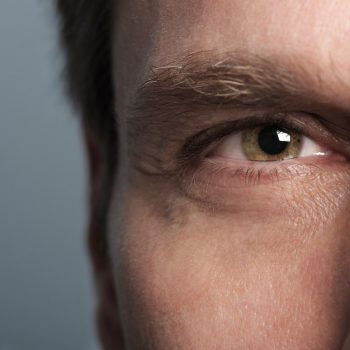The eyelids can be the objects of plastic surgery in the cases of blepharoplasty for the correction of various imperfections affecting this area, from bags to excess skin. The surgeon will also intervene in case of palpebral ptosis, a condition characterized by the lowering of the eyelid on the iris. What is the intervention? We asked Professor Marco Klinger, Head of Plastic Surgery at Humanitas.
Congenital or acquired
Blepharoptosis or ptosis of the eyelid may affect one or both eyes. The upper eyelid is cascading on the eyeball to varying degrees and the eye looks smaller. In more severe cases, it may also limit vision. This condition can be seen on the face of children, and here we talk about congenital ptosis. It involves the muscle that lifts the eyelid, the elevator muscle.
In 70% of cases, ptosis affects only one eye and may be associated with other problems. These may concern the sight itself, with the correlation, for example, between palpebral ptosis and amblyopia, the so-called lazy eye, with the visual function of the eye being reduced, or strabismus. The presence of palpebral ptosis may also inadvertently induce the raising of the eyebrow to compensate for the deficiency or a deviation of the head backwards, with the chin raised, or laterally to try to improve vision.
If not congenital, ptosis tends to occur in later life as a result of aging. Moreover, in this case there are dysfunctions of the elevator muscle due to relaxation of the tissues. In addition to congenital or senile trauma, ptosis can also be a consequence of ocular trauma, systemic muscle disorder such as severe myasthenia, damage to nerves that control muscle movement, for example as a result of stroke.
The treatment
The diagnosis of congenital ptosis is carried out by the pediatrician and in adult age by the ophthalmologist. The surgery is, however, decisive. Children may also be subject to the eyelid ptosis correction operation, especially if it is severe and likely to affect their eyesight. The intervention consists in reducing the length of the elevator muscle. To get the result, you can go down two paths: either eliminate a strip of muscle (imagining that it is a rolling shutter, you can remove some “splint”) or bend it on itself, “doubling it”, as when you make a trench in a fabric “, explains Professor Klinger.
The procedure is carried out under local anesthesia, because it is very important to cooperate with the patient, who is asked to close and open his eyes in the various phases, in order to verify the degree of correction carried out “.
What does the surgeon consider? How much of the iris is covered by the eyelid, so that the “shortening” can be programmed correctly and a completely symmetrical situation can be created with the other eye. Since the eyelid tends to let go slightly a few days after the surgery, it is done in such a way as to obtain the immediate result of a decidedly open eye, which in a few days will turn into a correct final result. If well planned and performed – the specialist points out – the operation allows you to completely recover the integrity of the field of vision “.
Are there any possible side effects? “There may be insufficient bleeding and corrections, which are not very easy to remedy, given that these are corrections of a few millimeters, which in the case of secondary surgery would occur on tissues already “bungled”, concludes the professor.







